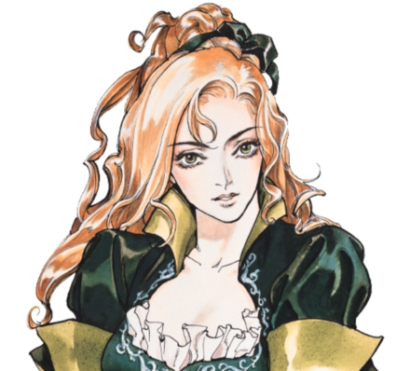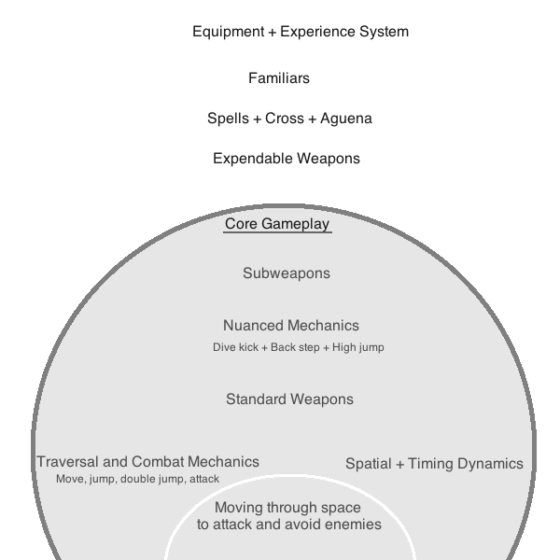The Complexities of Castlevania: SOTN – Supporting the Core Gameplay
December 14th, 2017
[When developing Castlevania: Symphony of the Night, director Koji Igarashi wanted to make a game which would “overturn player’s ideas about Castlevania, yet also feel like a Castlevania game”. In pursuing this vision, his team made SOTN’s game system much more complex, incorporating RPG systems and a wide variety of nuanced player actions. This series of articles will examine how these additions shape SOTN’s core gameplay of moving through space to dodge and attack enemies.]
The image above maps each of SOTN’s systems in terms of how related they are to the core challenge of moving through space to attack and avoid enemies. The visual encapsulates several key points discussed so far:
- The weapons and subweapons draw on the spatial and timing dynamics and therefore tend to enhance the core gameplay by facilitating new forms of interactions. For example, the subweapons introduce an aiming element.
- Being set in time and space, the systems within the grey bubble are much more concrete and easy for players to understand.
- The spells, familiars, levelling, equipment, and expendable weapons tend to be more opaque for various reasons (limited explanatory text, limited supply, poor form fits function of enemies, abstract variation), and the game doesn’t really teach the player or provide a space where players can learn and master these complexities. (The game doesn’t do the same for weapons and subweapons too, but because the player can see these items move through space, they can easily figure out how to use them).
- High jumping and dive kicking have little practical application within the main gameplay challenges and are thus further out from the centre.
- Aguena and the Cross subweapon function more like spells and are thus organised as such. The spells do have some bearing on the moment-to-moment gameplay and should sit on the edge. However, their ability to dilute the core gameplay pushes them into the white.
- Alternatively, some might argue that the systems on the white background engage the player with a separate kind of challenge, understanding the nuances of the game system. For example, equipping the right item for a given combat scenario does stress the player’s knowledge of SOTN’s enemies and combat. It’s this part of SOTN’s game system which feeds the online speed running and Youtube community.
- Given that the elements on the periphery don’t have much of an effect on the main business of defeating enemies (the main roadblock to beating the game), one has to wonder why they were included in the first place. Players looking for the path of least resistance will simply overlook these cluttersome elements.
- With more complexity within the system, the designers also have a harder job of communicating all of the necessary information to the player.
***





 Game Design Companion: A Critical Analysis of Wario Land 4 - $7.99
Game Design Companion: A Critical Analysis of Wario Land 4 - $7.99 Level Design: Processes and Experiences
Level Design: Processes and Experiences Speed Boost: The Hidden Secrets Behind Arcade Racing Design - $5.99
Speed Boost: The Hidden Secrets Behind Arcade Racing Design - $5.99 Adventures in Games Analysis: Volume I - $5.99
Adventures in Games Analysis: Volume I - $5.99







